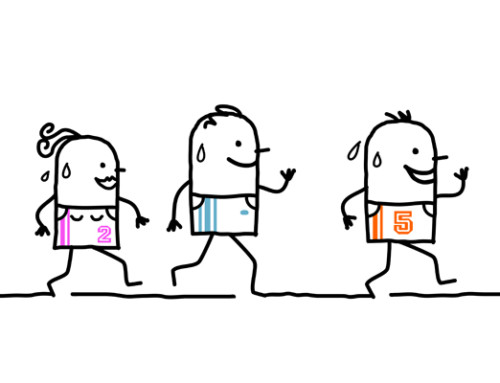In this article, I discuss strategies for overcoming adversity demonstrated by Team Canada in its epic 1972 hockey series versus the Soviet Union.
Estimated reading time: 5 minutes.
Canadians recently celebrated the fiftieth anniversary of the 1972 Summit Series between a Canadian team comprised of stars from the National Hockey League (NHL)–with the notable absence of the injured Bobby Orr–and an opponent made up of supposed amateur players from what was then the Soviet Union. Millions of Canadians like me were riveted by this landmark eight-game sporting spectacle.
The series holds extra special memories for me because I was fortunate enough to attend the third of four games in Canada which was held at the since-demolished Winnipeg Arena. I also vividly remember watching the last four games in Moscow from a classroom at St. John Brebeuf School and our teacher warning students to behave or else she would not let us see the action.
What was expected by most experts to be an eight-game sweep by Team Canada turned out to be a titanic struggle. After falling behind two games to one with one tie in the first four matchups in Canada, the team found itself in an enormous hole by then losing the first of the next four games in Moscow. This presented the Canadian players and coaches with no choice but to face significant adversity which it had not expected.
How did they fare in this endeavour? I will discuss the various strategies they used to mount a herculean comeback. In doing so, I will relate these strategies to situations in which people face adversity in various activities away from the hockey arena.
When the going gets tough, the tough get going
One key strategy Team Canada used in facing the adversity was to continue to work hard despite being down in the series. This resolve to keep exerting effort helped them to counteract the tendency to put in less effort and ultimately give up in the face of adversity.
This provides a lesson for anyone facing adversity. That is, even though it may sound cliched, it is important when dealing with adversity of any type to continue to ‘put one foot in front of the other.’ Or, to borrow a line from one of my favourite songs, “You’ve gotta get up and try, try, try”.
Positive thinking and self-talk
Encountering adversity often leads to negative thinking and self-talk. This is typically comprised of negative self-statements such as ‘I don’t have what it takes,’ and pessimistic views of one’s prospects like, ‘We don’t have a chance to come back from this.’ Not surprisingly, this negative self-talk has a negative emotional effect which, in turn, leads to putting in less effort and giving up in the face of adversity.
Team Canada counteracted this tendency toward negative self-talk by reminding themselves of their abilities and that they have what it takes to turn things around. This positive attitude was exemplified by the acknowledged leader of the team, Phil Esposito, in telling an interviewer following the Game 4 loss in Vancouver that the team was going to get better as the series progressed.
Even though it is challenging to do so when you’re not getting the results you want in various life endeavours, emulating Phil Esposito by reminding yourself of your abilities and that you have what it takes to rebound from your adversity is key to righting the ship. A positive mindset leads to positive emotions which leads to putting in the consistent effort it takes to overcome adversity.
Leadership
Rebounding from adversity by a group or team is facilitated by having a leader who promotes the group or team’s belief that it can get through the challenges it is facing. This spurs the group or team’s members to keep trying rather than giving up.
The aforementioned interview with Phil Esposito is cited by many observers as one of the greatest speeches in Canadian history and established him as the leader who would guide his team in facing adversity. In the interview, he ‘talked the talk’ of leadership by expressing disappointment that many Canadian fans were booing the players and that he felt this was unfair because he and his teammates were working as hard as they could because they loved their country. After his speech helped to galvanize the players into a cohesive unit, he ‘walked the walk’ of leadership with his play on the ice as he led the tournament in points.

Social support
Facing adversity is much easier if you’re not doing it alone. The bonding of Team Canada following Game 4 of the series turned a collection of individual stars playing for themselves into a team in which the players and coaches supported each other.
The support among team members and coaches was given a boost by the support of Canadian fans for the final four games in Moscow. This included a vocal group of Canadian supporters who attended the games in the Soviet Union as well as those back in Canada who sent letters and telegrams of encouragement to the players. Team Canada players and coaches cited this fan support as very helpful to them in trying to mount a comeback in the series.
In a similar way, cultivating social support to deal with adversity in various endeavours away from the ice can make facing adversity a much more doable task.
Rising to the occasion
Team Canada’s ability to face adversity was helped by its players rising to the occasion. That meant delivering in the clutch when it mattered the most. I have already mentioned one of the two players who stood out the most in this regard, Phil Esposito. The ability to shine bright in dark moments was a frequent occurrence for the Hockey Hall of Famer but many fans including myself regard his Summit Series performance as the greatest accomplishment of his storied career.
The other Canadian player who stepped up the most when needed was Paul Henderson. Unlike Phil Esposito, Paul Henderson was not an NHL superstar but rather than above average player who is not in the Hall of Fame and who was to many a surprise pick to make Team Canada’s lineup. However, he caught lightning in a bottle by playing the best hockey of his career during the series. His performance was fundamental to Canada being able to mount a comeback against the Soviets.
Putting it all together
Using the strategies for overcoming adversity which I discussed, Canada slowly but surely climbed back into the series when it shifted to Moscow for Games 5 through 8. However, they got off to a rocky start in this endeavour by losing Game 5. This left them down three games to one with one tie. That meant that they would need to win all three of the remaining games to win the series.
By continuing to apply the strategies I discussed, they won Games 6 and 7 with Paul Henderson scoring the winning goal in both games. They continued to face adversity in the pivotal Game 8 by falling behind 5 to 3 entering the third period. But they dug themselves out of yet another hole to tie the contest and then won it with just 34 seconds left on a goal by—you guessed it–tournament goal-scoring leader Paul Henderson.
When I face adversity, I often draw inspiration from Team Canada 1972. I apply the strategies exemplified by Phil Esposito, Paul Henderson and their teammates to deal with the challenge at hand in a systematic manner. Their performance in the Summit Series is the gold standard for overcoming obstacles to achieve success.
May you overcome adversity as Team Canada did in the Summit Series,
Dr. Pat





Leave A Comment